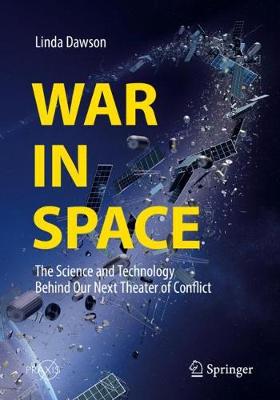Space Exploration
2 total works
Written by a former Aerodynamics Officer on the space shuttle program, this book provides a complete overview of the “new” U. S. space program, which has changed considerably over the past 50 years.The future of space exploration has become increasingly dependent on other countries and private enterprise.
Can private enterprise fill NASA's shoes and provide the same expertise, safety measures and lessons learned?
In order to tell this story, it is important to understand the politics of space as well as the dangers, why it is so difficult to explore and utilize the resources of space. Some past and recent triumphs and failures will be discussed, pointing the way to a successful space policy that includes taking risks but also learning how to mitigate them.
Can private enterprise fill NASA's shoes and provide the same expertise, safety measures and lessons learned?
In order to tell this story, it is important to understand the politics of space as well as the dangers, why it is so difficult to explore and utilize the resources of space. Some past and recent triumphs and failures will be discussed, pointing the way to a successful space policy that includes taking risks but also learning how to mitigate them.
With the recent influx of spaceflight and satellite launches, the region of outer space has become saturated with vital technology used for communication and surveillance and the functioning of business and government. But what would happen if these capabilities were disrupted or even destroyed? How would we react if faced with a full-scale blackout of satellite communications? What can and has happened following the destruction of a satellite?
In the short term, the aftermath would send thousands of fragments orbiting Earth as space debris. In the longer term, the ramifications of such an event on Earth and in space would be alarming, to say the least.
This book takes a look at such crippling scenarios and how countries around the world might respond in their wake. It describes the aggressive actions that nations could take and the technologies that could be leveraged to gain power and control over assets, as well as to initiate war in the theater of outer space.
The ways that a country's vital capabilities could be disarmed in such a setting are investigated. In addition, the book discusses our past and present political climate, including which countries currently have these abilities and who the aggressive players already are. Finally, it addresses promising research and space technology that could be used to protect us from those interested in destroying the world's vital systems.
In the short term, the aftermath would send thousands of fragments orbiting Earth as space debris. In the longer term, the ramifications of such an event on Earth and in space would be alarming, to say the least.
This book takes a look at such crippling scenarios and how countries around the world might respond in their wake. It describes the aggressive actions that nations could take and the technologies that could be leveraged to gain power and control over assets, as well as to initiate war in the theater of outer space.
The ways that a country's vital capabilities could be disarmed in such a setting are investigated. In addition, the book discusses our past and present political climate, including which countries currently have these abilities and who the aggressive players already are. Finally, it addresses promising research and space technology that could be used to protect us from those interested in destroying the world's vital systems.

